Pitbull Boxer Mix: Bullboxer Pit Dog Breed
The Bullboxer Pit is a unique mix that combines the lively spirit of the Boxer with the dependability of the American Pit Bull Terrier. This mix is becoming more common as people look for particular dog breeds. People who love this breed praise its devotion and fun nature, but the variety in its genes raises questions about how predictable its behavior and health can be.
Owning a Bullboxer-Pit is often seen as significant for families, but it’s important to remember that this dog needs thorough socialization and training because of its mixed background.
Choosing to get a Bullboxer-Pit means accepting the challenge of understanding the full range of dog genetics and personalities. To know what it means to have a Bullboxer-Pit, one must consider all the factors that shape one’s body and mind.
Key Takeaways
- Bullboxer-Pits blend Boxer energy with Pit Bull loyalty.
- These dogs require consistent training and socialization.
- Understanding their genetics is key to managing behavior.
The Bullboxer-Pit, an energetic and loyal companion, thrives in active families. Their mixed heritage demands thorough socialization and training for a well-adjusted pet. Owners must grasp the complexity of their genetic makeup for a harmonious relationship.
Quick Facts
The Bullboxer-Pit is a mixed breed dog that comes from crossing a Boxer with an American Pit Bull Terrier. Known for their solid and agile bodies, these dogs combine the best qualities of their parents. Various hybrid and designer dog groups recognize them.
The Bullboxer Pit is a sturdy dog with a mix of Boxer and American Pit Bull Terrier features. They usually live between 10 to 12 years. Owners love their Bullboxer Pits for their warmth and faithfulness. These dogs are energetic, learn quickly, and love to play.
It’s also worth noting that they get along with kids, but growing up well-behaved depends on proper training and getting to know different people and experiences early on.
Bullboxer Pit Dog Breed Pictures
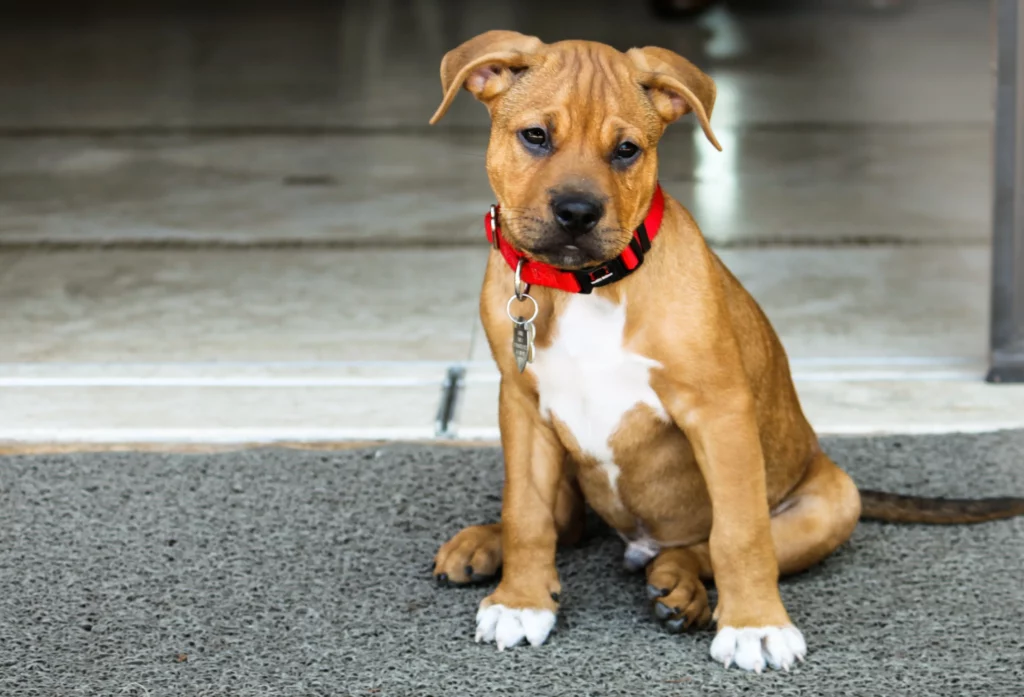
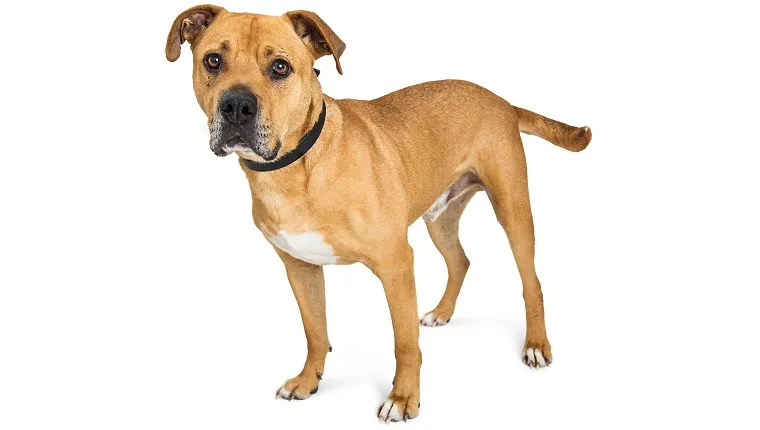
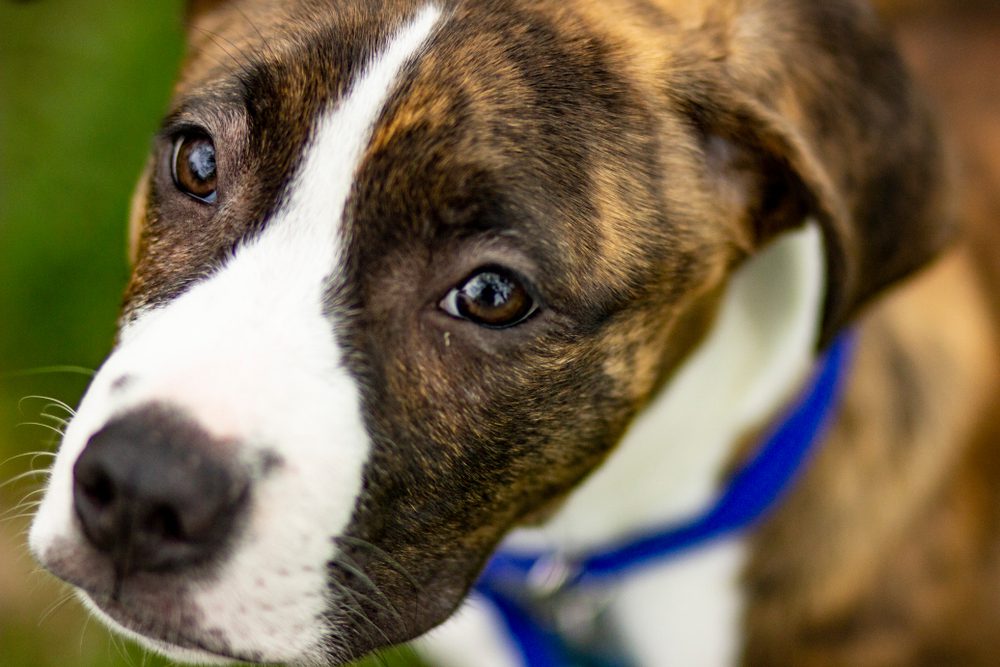
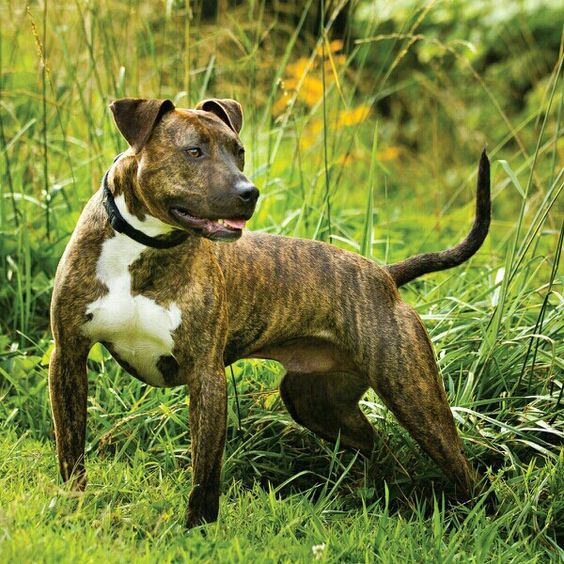
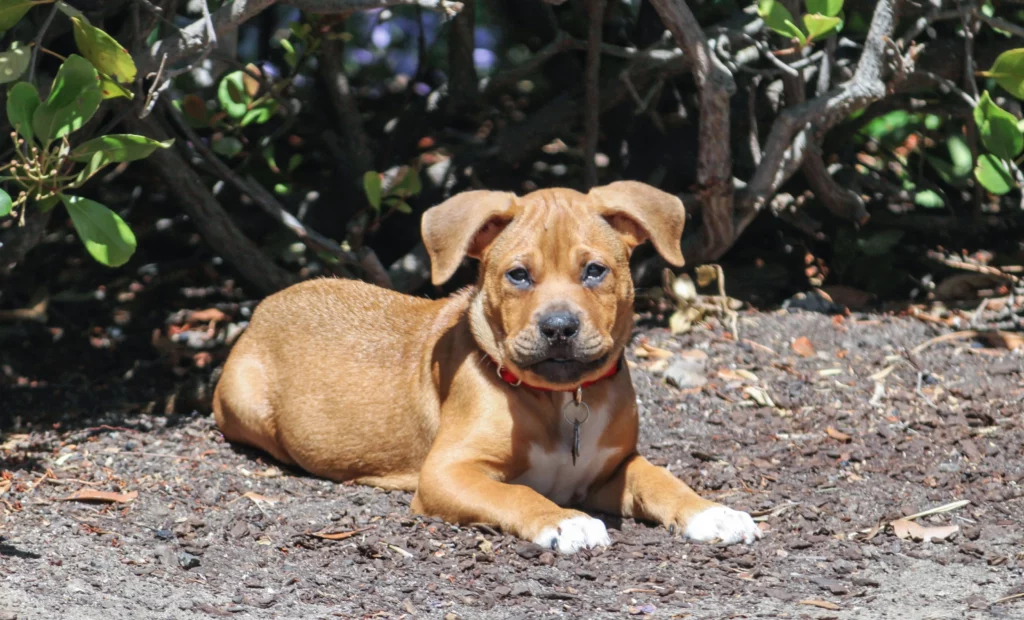
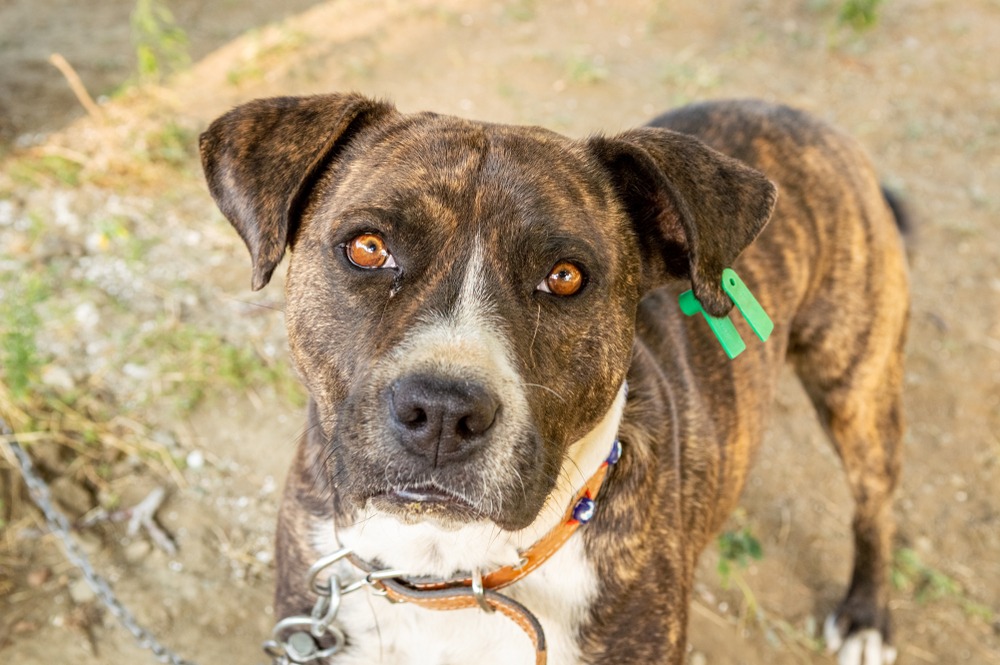
Overview
Building upon the foundational traits outlined in the quick facts, an in-depth exploration of the Bullboxer Pit reveals a multifaceted canine companion, embodying a blend of physical robustness and dynamic temperament.
As a cross between the Boxer and American Pit Bull Terrier, these Designer Dogs inherit a muscular physique, indicative of their lineage’s working-dog origins. The convergence of Boxer’s agility with the Pit Bull Terrier’s strength contributes to the Bullboxer Pit’s physical prowess.
Temperamentally, they exhibit various behavioral traits ranging from the Boxer’s playful nature to the Pit Bull Terrier’s loyal and protective disposition. The Bullboxer Pit’s reputation as a vigilant watchdog and a compassionate support animal is a testament to its complex but coherent behavioral profile.
Key Traits
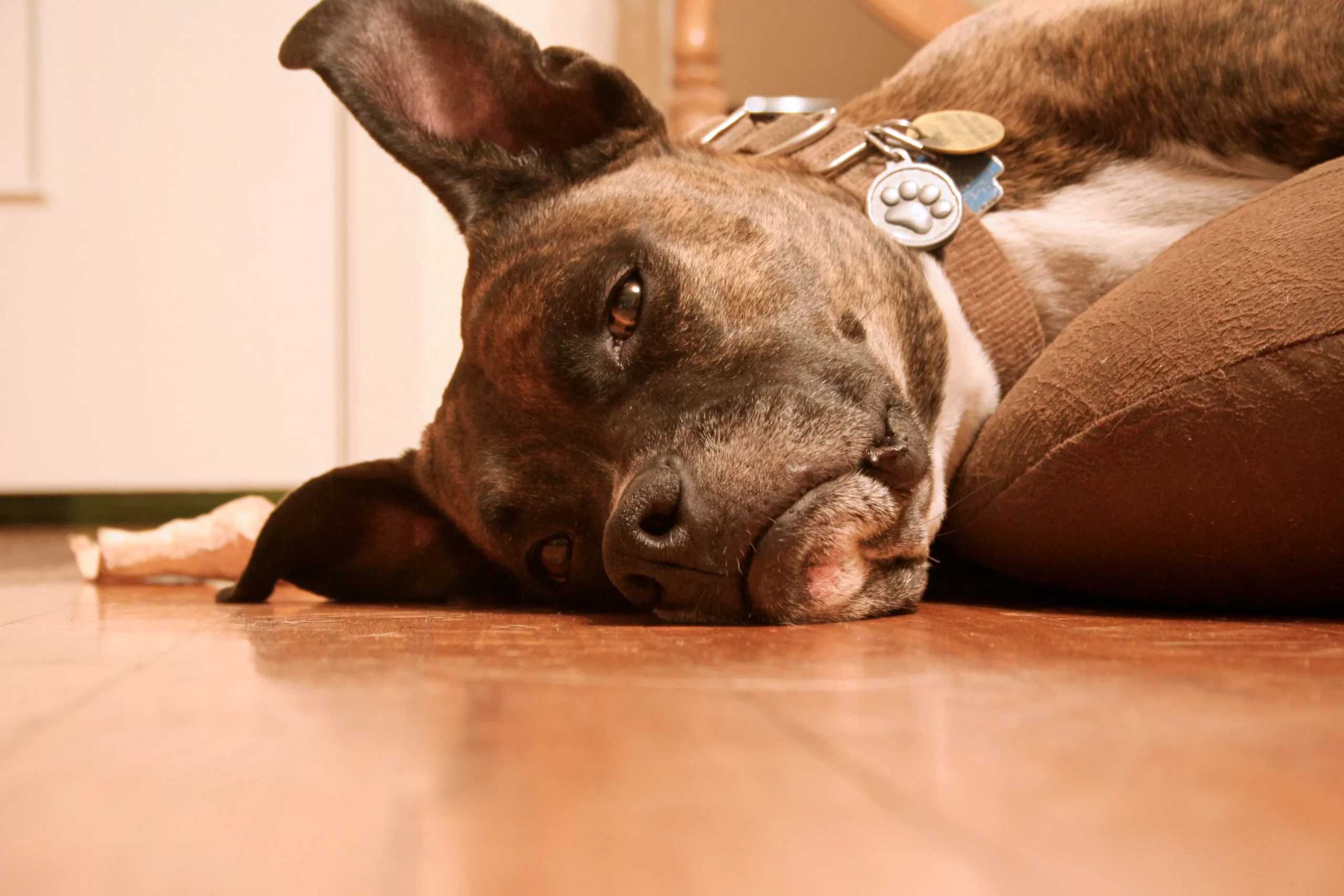
Exploring the critical characteristics of Bullboxer Pits reveals a fascinating blend of features from their Boxer and American Pit Bull Terrier heritage. These clever canines stand out for their boundless energy and deep devotion to their families, thriving in environments with plenty of active playtime. Their muscular physique and recognizable facial expressions show the careful mix of qualities passed down from their parent breeds. Bullboxer Pits have a natural tendency to be joyful and protective, often becoming beloved members of the households they live in.
| Trait Category | Boxer Influence | American Pit Bull Terrier Influence |
|---|---|---|
| Physical | Unique lips and jawline | Strong build |
| Behavioral | Fun-loving | Guardian Instinct |
| Temperamental | Faithful to family | Lots of stamina |
These dogs possess a loyal nature and need an owner who appreciates their energy and can provide them with the exercise they crave. Their physical strength and striking looks reflect the selective breeding of Boxers and American Pit Bull Terriers. As playful as they are vigilant, these dogs often become essential to the families they join.
Origins and Development
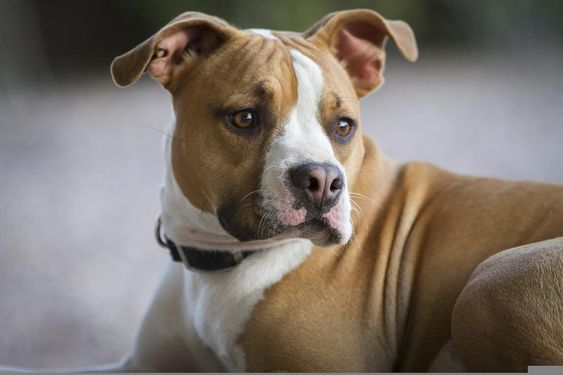
The Bullboxer Pit is derived from the sturdy Boxer and the resilient American Pit Bull Terrier. These two breeds bring unique qualities to the Bullboxer Pit’s heritage. This crossbreed combines the strength and intelligence of its parent breeds. It’s become a dog known for its muscle and smarts, thanks to the legacy of its forebears. The path to creating this breed has been shaped by their historical roles and the careful selection of traits breeders wanted to see carried on.
The Boxer and the American Pit Bull Terrier have deep histories contributing to the Bullboxer Pit. The evolution of the Bullboxer Pit has seen it transform from an initial cross to a breed with its own identity. Traits from the Boxer and the American Pit Bull Terrier are evident in the Bullboxer Pit’s nature and appearance. Selective breeding has significantly affected refining the bull boxer pit’s health and temperament. This breeding has helped establish the Bullboxer Pit as a unique mixed breed.
Breed Ancestral Roots
The Bullboxer Pit is a crossbreed from mixing a Boxer with an American Pit Bull Terrier. This new breed takes on a mix of features and histories from its parent breeds. These dogs are solid and muscular, often having the Boxer’s distinctive facial features and a coat of various colors.
The personality of the Bullboxer Pit is a mix of its ancestry, commonly showing loyalty, a playful nature, and a protective streak.
These dogs are acknowledged by various dog organizations and are known to be great companions. They have personalities that can handle many behavioral challenges. Being a hybrid, they are bright and have an instinct to guard, which makes them good watchdogs and support animals. However, they need proper grooming and the right diet to stay healthy.
Mix Evolution Stages
The Bullboxer Pit is a hybrid dog resulting from the Boxer and the American Pit Bull Terrier mix. This breed was created to bring together the best traits of both parent breeds. The focus in breeding has been to develop a dog with a friendly temperament that is active and good with kids. Owners need to be mindful when introducing them to other dogs.
These dogs have a sturdy build, inheriting traits from the Boxer and the Pit Bull. They usually live for about 10 to 12 years. Many people appreciate the Bullboxer Pit for its loyalty and friendly nature. It’s also known for helping to improve the often misunderstood reputation of pit bull-type breeds.
Key Breed Influences
Bullboxer Pits are a unique mix of the Boxer and American Pit Bull Terrier breeds, created to blend the Boxer’s agility with the strength and determination of the American Pit Bull Terrier.
This hybrid is recognized by organizations like the International Designer Canine Registry and is known for inheriting traits from both parent breeds. They have the American Pit Bull Terrier’s muscular frame, brave nature, and the Boxer’s quickness and playful spirit.
These dogs, often called boxer pit bulls, are bright and have an instinct to protect. With the proper training and socialization, they make loyal pets and alert watchdogs.
Stature Considerations
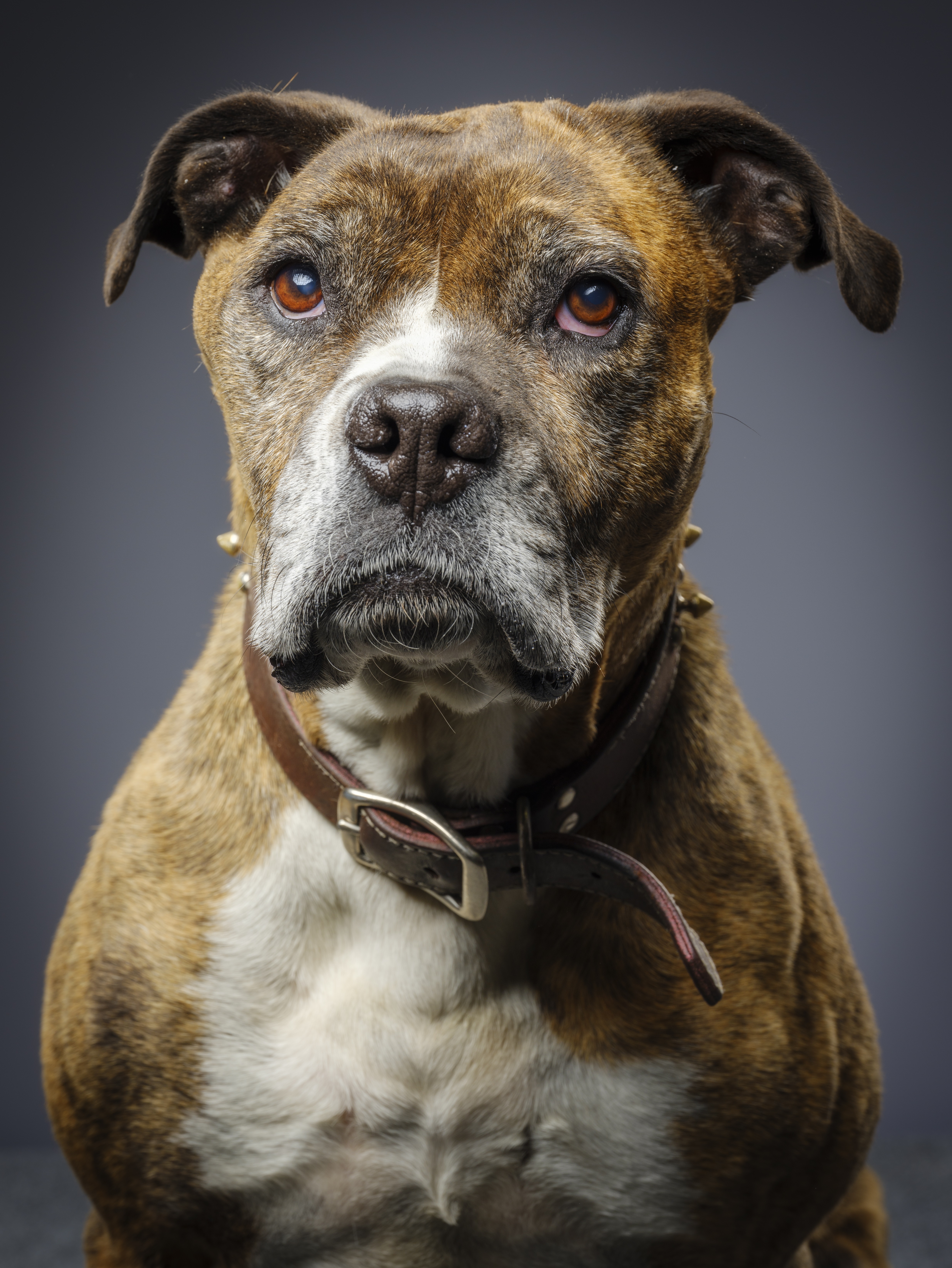
When looking at the Bullboxer-Pit’s stature, it’s essential to consider several physical traits. These traits will affect the kind of home they will thrive in. Their height, weight, and overall build are crucial to understanding their needed space. This also affects whether they’ll be happy in a smaller apartment or need a larger house with a yard. Owners should also consider how much exercise the breed requires. The growth patterns of these dogs are something that shouldn’t be overlooked.
The ideal height for a Bullboxer-Pit usually falls within a specific range. Understanding this range helps determine if your living space can accommodate their size. The breed’s weight and build should also be considered. A sturdy build means they need ample room to move around. Checking if your apartment is big enough for a Bullboxer-Pit is essential. They can adapt to apartment living only if the space is sufficient. Their need for exercise means they need access to a place to run and play regularly.
Ideal Height Range
The ideal height for a Bullboxer Pit is crucial for its health and well-being. These dogs, a mix of American Pit Bull Terriers and Boxers should stand 20 to 25 inches tall at the shoulder. Having the right height ensures they have the agility and strength their breed is known for.
A well-sized Bullboxer Pit will have a balanced build, showing off the best traits of both parent breeds. The dog needs to fit this height range to prevent any issues with their body structure that might affect their ability to be active.
Knowing your dog’s size helps provide the right amount of exercise and space they need to live happily with their families.
Weight and Build
When analyzing the weight and build of Bullboxer Pits, it’s clear that they showcase a mix of traits from the American Pit Bull Terrier and Boxer breeds. These dogs are known for their muscular bodies and fall within the medium to extensive size range.
A typical Bullboxer Pit’s weight can vary greatly, often hitting 80 pounds or more. This variation is due to their unique genetics and lifestyle habits. These canines display a balanced physique with a robust and sporty structure, perfect for high-energy activities.
For anyone considering a Bullboxer Pit, their size and need for regular exercise are crucial to keep them healthy and fulfilled.
Apartment Size Compatibility
Understanding whether a Bullboxer Pit suits an apartment involves more than just considering its size. This breed is full of energy and needs plenty of exercise and things to do. Without enough activity, these dogs might start misbehaving. Small apartments could be challenging, but these dogs can adapt to smaller spaces with enough play and mental challenges.
Owners looking for an apartment-friendly dog should choose a naturally quieter and more relaxed indoors. It’s also essential to keep noise down to maintain a good relationship with your neighbors, especially in busy apartment buildings.
Exercise Space Requirements
Bullboxer Pits are active, muscular dogs with plenty of room to move and play. Providing enough space to keep them healthy and prevent bad behavior is critical. A small area won’t cut for these medium to large dogs. They require a space that matches their size and energy levels to stay fit.
To keep a Bullboxer Pit happy, you must give them a safe environment to burn off their energy. They might start chewing or digging out of boredom without enough room to exercise. Think about it: you wouldn’t want to be cooped up all day, and neither do they. Giving them the right amount of space can prevent many headaches and keep your dog mentally and physically sound.
Regular exercise is not just a bonus; it’s essential for Bullboxer Pits. It keeps them from becoming too hyper and helps them behave better at home. Plus, it’s good for their health. Setting up a big, fenced-in yard or taking them to the dog park daily can improve their well-being.
Growth and Development
The growth and development of a Bullboxer Pit are shaped by its genes and food. The genetic code of a Bullboxer Pit sets the potential for how big and sturdy it might get, influencing how fast and how much it grows. Because they come from larger dog breeds, bullboxer pits may increase in number for longer.
Nutrition is crucial, providing the necessary elements for a dog to grow strong and healthy. When a Bullboxer Pit is around three months old, keeping a close eye on its diet and how fast it’s growing is vital. Giving the dog the right kind of food in the right amounts is critical to ensuring it grows appropriately. This helps prevent bone and joint problems if the dog doesn’t get the proper nutrients.
Adjusting what the dog eats based on what’s typical for its breed can help the Bullboxer Pit grow in the best way and avoid health issues related to its size.
Behavioral Traits
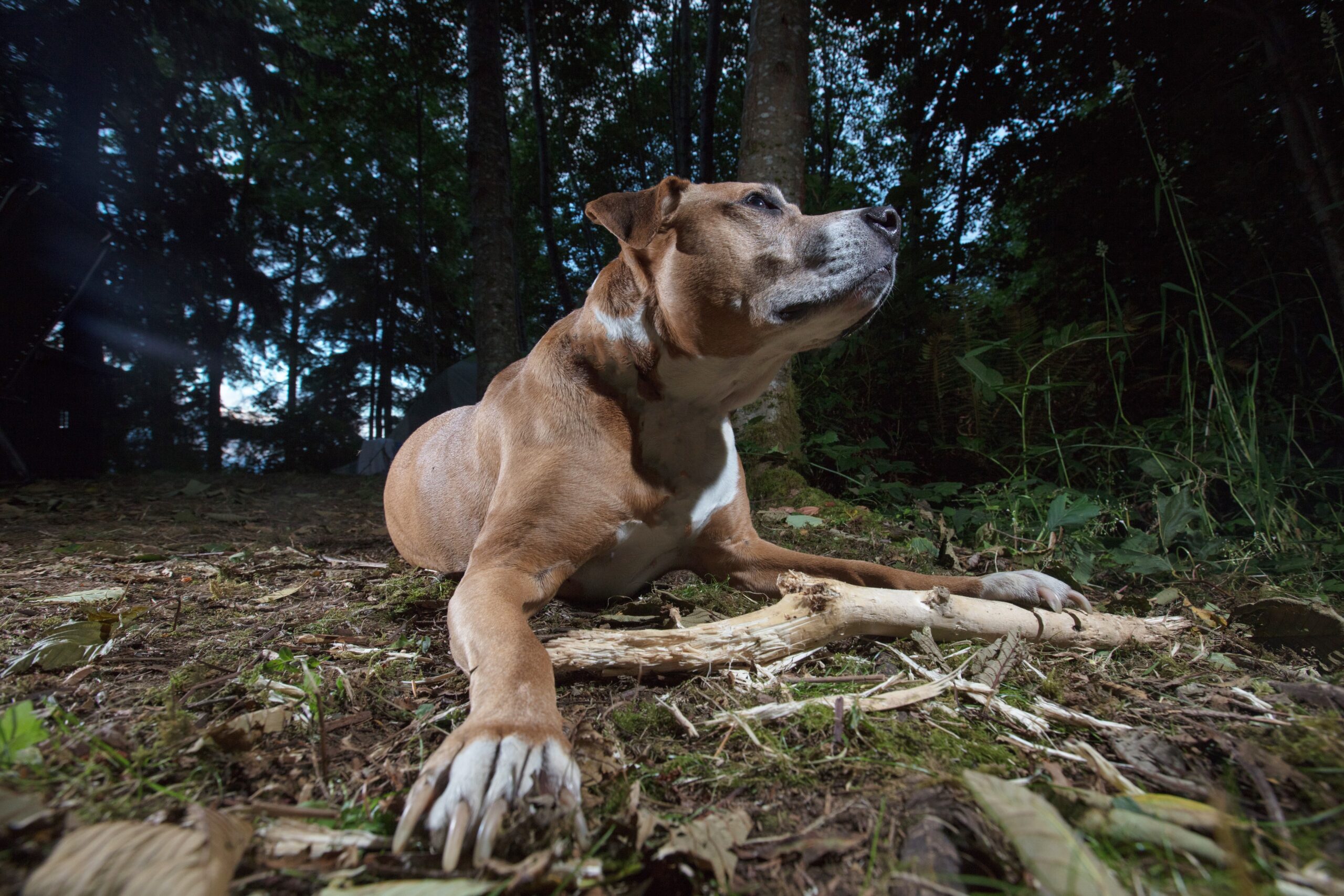
The Bullboxer-Pit dog breed exhibits a mix of characteristics inherited from its ancestors, typically showing high energy levels and intelligence. To ensure these dogs become sociable and obedient pets, they need a well-planned routine. Early socialization is essential to prevent aggressive behaviors while recognizing their natural hunting instincts helps manage their interactions. Regular and structured training is necessary for good behavior. Additionally, their activity needs are significant; the right amount of exercise significantly affects their mood and conduct.
Understanding the hunting behavior of these dogs is critical to controlling their instincts. Introducing them to various environments and situations helps them learn to behave well around others. It’s also crucial to recognize and address signs of aggression quickly. Balancing their exercise needs with their energetic nature can help maintain a stable and happy pet.
Understanding Prey Drive
Inherent to the behavioral repertoire of dogs, prey drive manifests as a powerful urge to pursue and capture moving objects or animals. This trait varies widely across breeds and individual canines. Pitbull mixes, including the Bullboxer-Pit, may exhibit a pronounced prey drive, reflecting their ancestral predilection for hunting and chasing.
Owners of such breeds must acknowledge and understand this instinct to manage their pets effectively. Structured training and targeted enrichment activities allow owners to channel this drive productively. By dedicating time to engage these dogs in controlled play that simulates the chase, such as with lure coursing or interactive toys, the prey drive can be satisfied without endangering smaller animals or compromising safety.
Socialization Techniques
To train Bullboxer Pit puppies well, it’s vital to use positive reinforcement and expose them to different places. It’s best to start socialization early so they grow into friendly and confident dogs. Using rewards to train them is critical, especially in places like a dog park where they can meet other dogs safely but realistically.
Regular playdates help these puppies understand how to act around other dogs and prevent them from being aggressive. Introducing them slowly to new things like strange noises, new people, and other pets is also a good idea. This helps them stay calm in new situations. Keeping up with these new experiences is essential to stop them from becoming scared or anxious.
Remember to train your Bullboxer Pit with kindness and patience. This will help them learn better and trust you more. And when they do something good, give them a treat or praise to let them know they did well. This will make them want to behave well again in the future.
Recognizing Aggression Signs
Training and socializing your Bullboxer Pit are vital steps toward a well-behaved pet, but it’s just as critical to spot early signs of aggression.
Look for body language like stiffness, raised hackles, and direct, prolonged eye contact, which can signal that a dog is feeling aggressive. Listen for growls, snarls, or excessive barking, as these sounds can indicate a dog is on edge.
Be aware of behaviors like resource guarding, where a dog acts aggressively over food, toys, or their space. Fear or anxiety can also lead to aggression, so observing your dog’s behavior in different situations is necessary.
Dominant actions that grow in intensity could point to a more severe issue, and you might need to consult a professional for help.
Exercise Impact on Behavior
Regular activity is crucial in shaping the behavior of Bullboxer Pits. It profoundly affects their temperament and actions. These dogs need the right amount of exercise to keep their energy levels in check. Without it, they can become anxious or exhibit destructive behavior.
Physical activity is vital for their health and also provides mental stimulation. This helps with their thinking skills and emotional balance.
An exercise routine helps these dogs stay calm and reduces hyperactivity. It also helps them learn good behavior. Without enough exercise, they might get bored and act out, like barking too much or chewing things they shouldn’t.
Training for Obedience
Training Bullboxer Pits for obedience is a complex task that involves clear communication, positive reinforcement, and firm boundaries to ensure they become well-behaved pets. This breed is known for its loyalty and protective instincts, so a training plan that includes discipline and activities that stimulate them mentally and physically can help prevent bad behavior.
Teaching them basic commands is crucial as it keeps their mind active and reinforces their role as leaders. However, when training them as guard dogs, it’s essential to do it responsibly to prevent unnecessary aggressiveness. Providing mental challenges like puzzle toys and teaching them new tricks can help keep their sharp minds occupied, leading to a more balanced behavior.
Vitality and Wellness Concerns
Talking about the health and well-being of the Bullboxer-Pit is about being ahead of the game with their health care. This means doing everything possible to keep them in tip-top shape physically and mentally. Here’s what every owner should keep in mind:
- Regular vet check-ups are necessary to catch any health problems specific to the Bullboxer-Pit before they get serious.
- Knowing about everyday issues like hip dysplasia and heart conditions can help you care for your dog better.
- Good wellness habits can affect your dog’s happiness and health.
- Keeping a good balance of exercise and fun activities is vital to keeping your Bullboxer-Pit lively and alert.
To summarize, looking after a Bullboxer-Pit means being on top of their health with routine checks, being aware of breed-specific conditions, actively preventing health issues, and keeping them fit and mentally stimulated.
It’s about avoiding problems and providing a life full of quality and joy for your four-legged companion.
Health Screening Importance
Regular vet exams are vital to keeping your Bullboxer-Pit healthy. These tests are thorough, covering everything from routine check-ups to targeted tests for issues like hip dysplasia, a common problem in the breed.
Vets use these screenings to track the dog’s health over time. This helps them spot any changes that could be a sign of illness. Catching these signs early can mean quicker treatment. This helps keep your dog healthy longer, improving both lifespan and well-being.
Common Health Issues
Bullboxer-Pits are robust dogs, but they do have health issues that owners should watch for. Allergies are common in this breed and can lead to skin problems. Regular baths with high-quality dog shampoo and consistent brushing can help keep their skin healthy.
Hip dysplasia is another issue that this breed can face, and catching it early is critical to managing it effectively. Regular vet check-ups can spot signs of hip problems and keep the dog moving comfortably.
Heart conditions like aortic stenosis are also a concern and should be checked during vet visits. It’s critical to keep an eye out for hemangiosarcoma, a severe type of cancer. Routine veterinary exams are the best way to catch these issues early and keep your Bullboxer-Pit in shape.
Wellness and Prevention Tips
Proactive health strategies significantly boost the health and lifespan of Bullboxer-Pits. Owners need to find the right mix of diet and exercise for their dogs to avoid weight gain and its harmful effects.
Regular check-ups with a vet keep these dogs in good shape and ensure they stay current with their shots.
Mental engagement is just as important as physical health. Toys that encourage chewing and games that require thinking help keep their minds sharp and prevent naughty behavior.
Teaching them to behave around others and obey commands helps them develop a friendly nature.
Keeping an eye out for early symptoms of allergies, joint problems, or heart issues means you can get help fast if your dog gets sick.
Essential Maintenance Tips
Maintaining the health of a Bullboxer-Pit requires a routine that meets their physical and mental needs. Owners must carry out a complete care plan to ensure their pet’s well-being.
This involves regular grooming, appropriate diet, sufficient exercise, and attentive health checks.
Establish a grooming routine to keep their coat in good condition and ensure cleanliness.
Adjust the dog’s diet to match their energy levels and keep an eye on it with help from a vet.
Provide consistent exercise and training sessions to keep them fit and mentally sharp.
Regular health examinations are essential to catch and treat any issues promptly.
Regular Grooming Routines
To maintain your Bullboxer Pit’s health and look, it’s vital to have a grooming routine. This should include brushing their coat, cleaning their ears, trimming their nails, and using a good shampoo.
Brush your dog’s coat at least once a week to control shedding and keep their coat shiny and clean. This helps reduce dander and keeps their skin healthy by spreading their skin’s natural oils.
Ear cleaning should be done gently to prevent infections that could cause health issues.
Keeping your dog’s nails short will avoid discomfort and walking problems.
Use a shampoo designed for active dogs to clean your Bullboxer Pit without removing the necessary oils, which protect their coat.
Dietary Needs Management
A well-rounded and nutritious diet is vital for the energetic Bullboxer Pit. This breed needs a well-thought-out meal plan and controlled portions to stay healthy and full of life. The type of dog food you choose is critical for their high-energy needs. It’s a good idea to talk to a vet to make sure the diet fits the needs of your adult dog, especially since they’re a large breed.
The diet must be nutritionally complete, and the daily food amount should match the dog’s exercise, age, and body size. Careful management of a Bullboxer Pit’s meals is critical to avoid weight gain while keeping them active and reducing health problems related to their diet.
Exercise and Training
Regular physical activity is crucial for the Bullboxer Pit to maintain health and good behavior. This energetic mix of Pitbull and Boxer thrives with a variety of exercises.
Cardio workouts like biking are beneficial but require a bike leash designed for dogs and training to get your dog used to the bike. This keeps them safe and happy while they exercise with you.
Mental stimulation is just as vital as physical exercise for these dogs. Engage their minds with puzzle toys, teaching new tricks and hiding treats for them to find. This challenges their intellect and keeps them sharp.
Training them as guard dogs can also be a good idea. It improves their natural protective behaviors through consistent command training and practice in realistic situations.
Playing tug-of-war and chase satisfies their instinct to hunt and ensures they are entertained and physically and mentally engaged.
Health Monitoring Essentials
Caring for a Bullboxer Pit’s health is more than exercise; it’s about being watchful and proactive. Owners should be aware of their dog’s physical and emotional needs. Frequent vet visits help catch health issues early, especially for those familiar with Pit Bulls. It’s essential to watch for even minor changes in mood or eating habits, as these can be clues to more significant problems.
Mental exercises like brain games and training keep their minds sharp. Closely watching your dog’s overall health can significantly improve their life.
Understanding Your Dog’s Health Needs
Dog owners need to focus on both the body and mind of their pets. Regular vet check-ups are a must to prevent health issues. It’s also crucial to notice any unusual changes in your dog’s behavior or appetite. This could mean something is wrong. Including activities that challenge their brains, like puzzle toys and obedience training, is crucial for their mental well-being.
Socialization Strategies
Teaching a Bullboxer Pit to socialize well is critical to raising a happy, confident dog. These dogs, a mix of Boxer and Pitbull breeds, need to learn how to interact with the world during their sensitive early weeks, from 3 to 14 weeks old.
Owners should use positive reinforcement to encourage good behavior, rewarding their dogs with treats and praise. Introducing these dogs to various situations, including meeting different people and animals and experiencing new places, is vital.
Doing this regularly helps prevent fear and aggression from developing. Consistent socialization ensures that Bullboxer Pits grows emotionally stable and can handle various social situations calmly.
Owners play a crucial role in preparing their dogs to be well-behaved members of society.
Nutritional Guidelines
A healthy diet is essential for a Bullboxer Pit’s well-being, especially in an apartment. It’s critical to create a meal plan that fulfills the dog’s nutritional needs and accounts for its tendency towards food allergies. Regular feeding is essential to controlling the dog’s weight and promoting a healthy metabolism.
- Examine the protein, fat, carb, vitamin, and mineral content in the Bullboxer Pit’s meals.
- Pinpoint potential allergens and, if needed, design a diet that won’t cause allergic reactions.
- Figure out the best feeding schedule to keep the dog energetic and its digestion on track.
- Keep an eye on the dog’s weight regularly, adjusting food amounts to avoid excess weight gain, which is particularly important when there’s limited space for exercise.
Balanced Diet Essentials
To keep your Bullboxer-Pit healthy, it’s essential to feed them a balanced diet with various nutrients. They need carbohydrates, proteins, fats, vitamins, and minerals to stay energetic and fit.
Ensure their meals are portion-controlled to avoid weight gain and include plenty of water for hydration. Choosing natural, unprocessed foods will give them the micronutrients they need.
Lean meats will help your dog maintain strong muscles, and carbs give them the energy for play and exercise. For a shiny coat and healthy joints, include fats from sources rich in omega fatty acids.
Working with a nutritionist to create a diet that’s just right for your Bullboxer-Pit is a good idea. This personalized plan will help them enjoy a long and happy life.
Allergies and Sensitivities
For the health of a Bullboxer-Pit, it’s not just about feeding them a balanced diet; we also need to watch out for their allergies and sensitivities. These can change what they should eat and how they feel. Sometimes, these dogs react badly to things they’re around daily, so we might have to change what we feed them.
They could be allergic to stuff like grains, dairy, or even certain meats, which can appear as problems with their skin, fur, or stomach. Trying out a special diet that doesn’t have the things they’re allergic to or giving them different kinds of meat they haven’t had before could help. But you can’t guess what’s wrong—you need to talk to a vet who can figure out what’s causing the problem.
That way, you can ensure they get the right food to stay healthy. Always watch for signs of trouble, like scratching or skin issues, so that you can deal with them quickly.
Feeding Schedule Importance
Maintaining a regular feeding schedule is critical for the health of a Bullboxer-Pit. Not only does it support their metabolic and digestive functions, but it also has a significant impact on their overall wellness.
When a dog eats at the exact times every day, it helps keep their energy levels stable and their mood even. Setting up specific meal times benefits the dog’s internal rhythm and digestion.
Maintaining a feeding routine is crucial for monitoring your pet’s eating patterns. This can help spot any unusual changes early, which might indicate health issues.
A structured feeding plan contributes to the physical and emotional balance of the Bullboxer-Pit.
